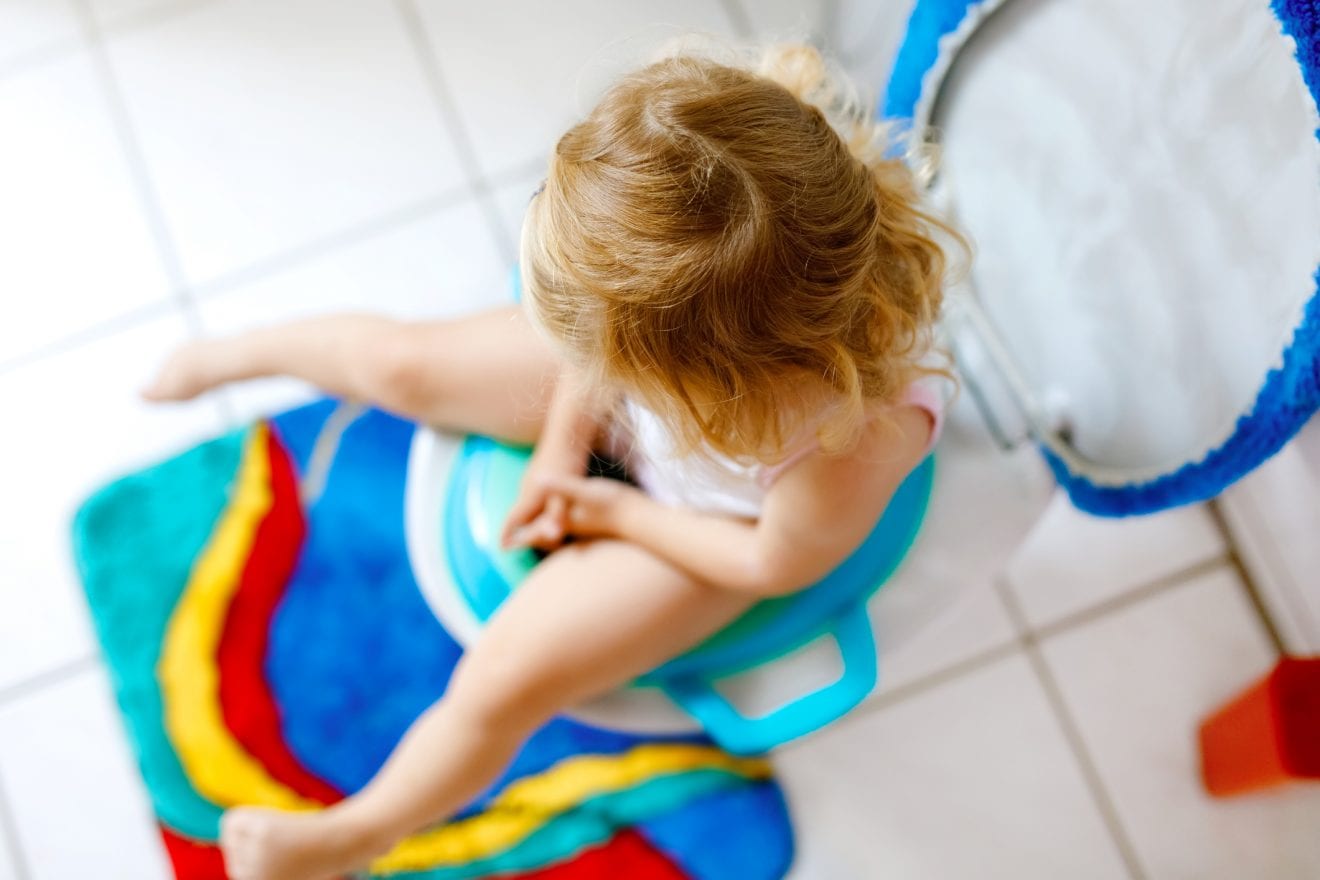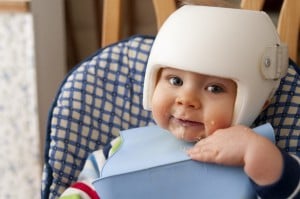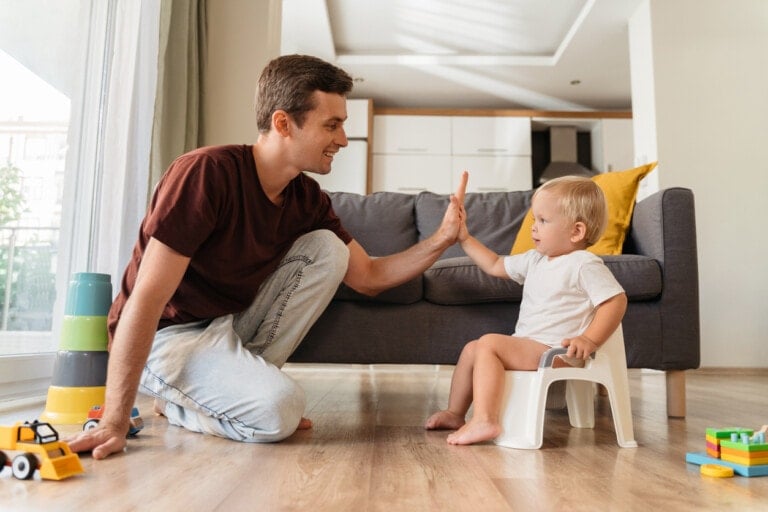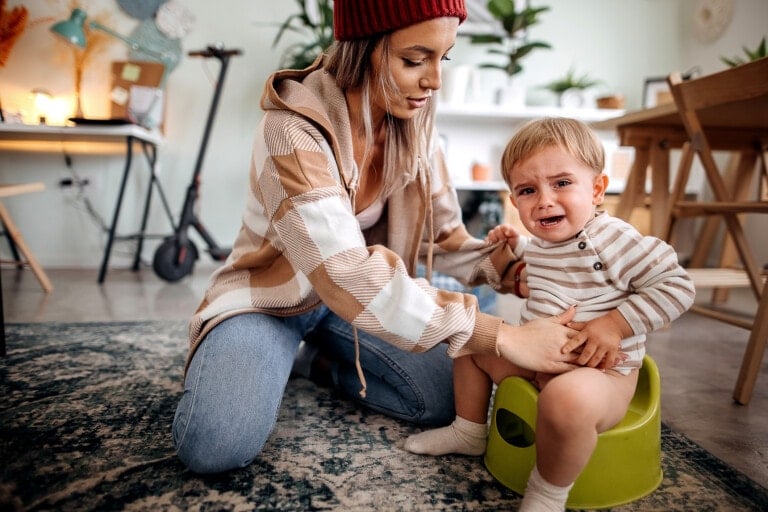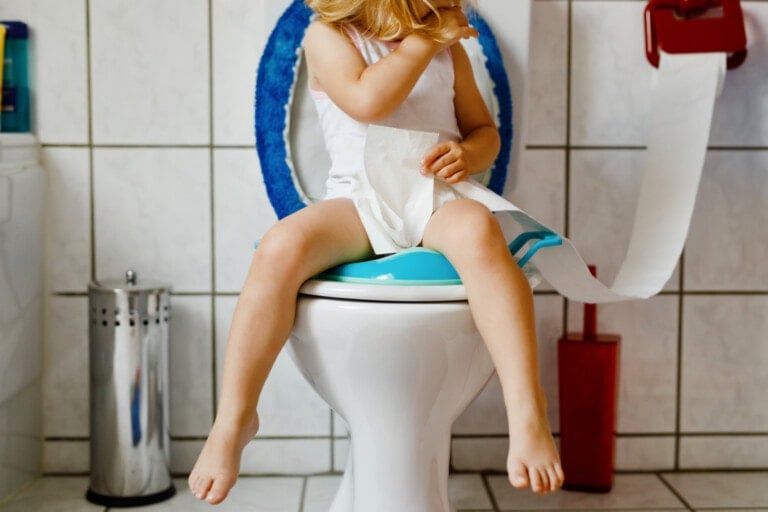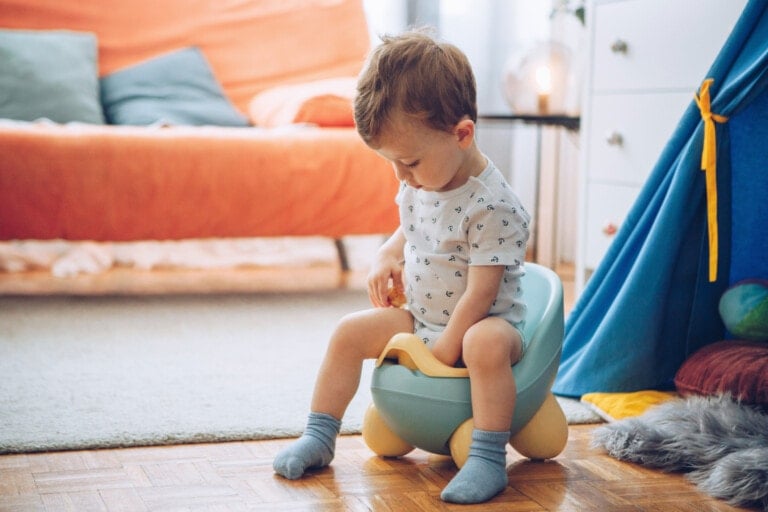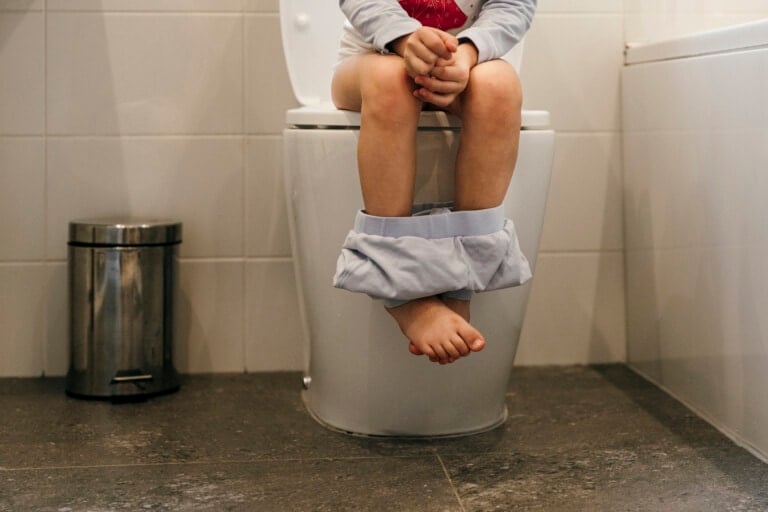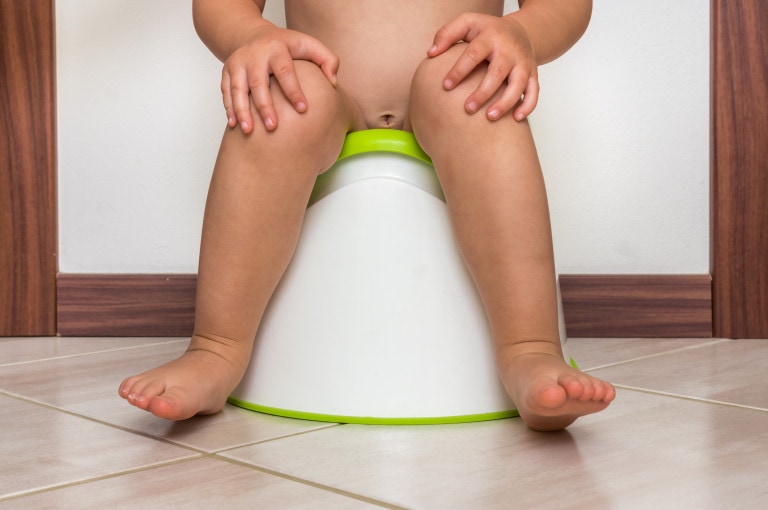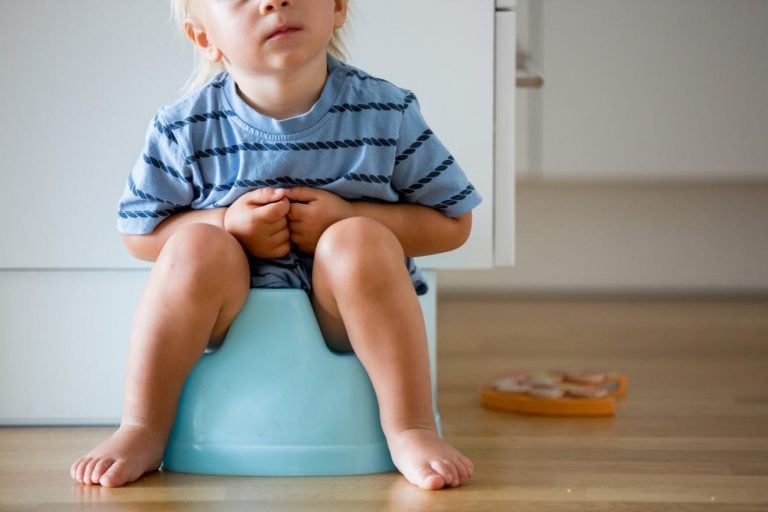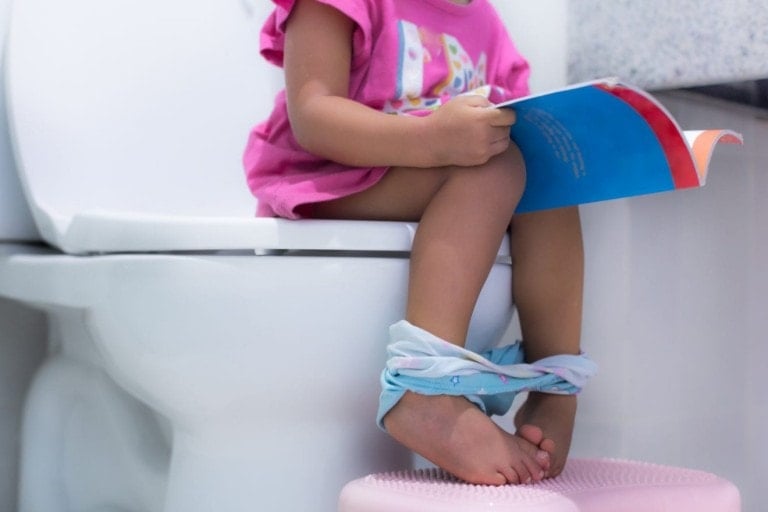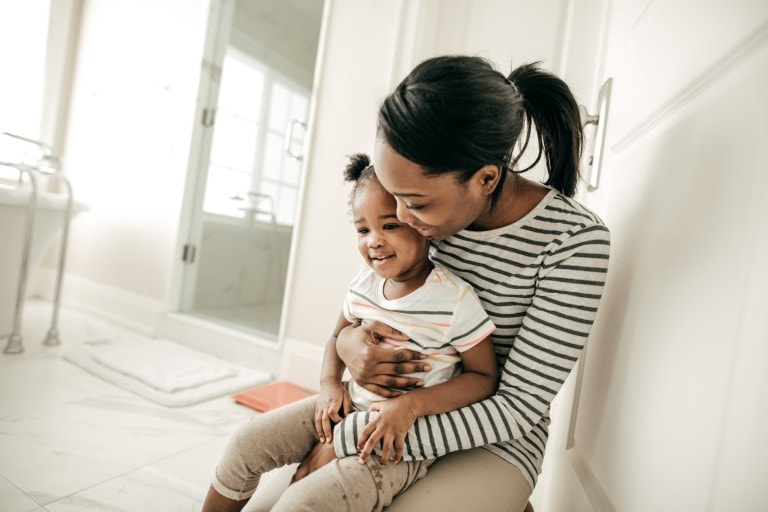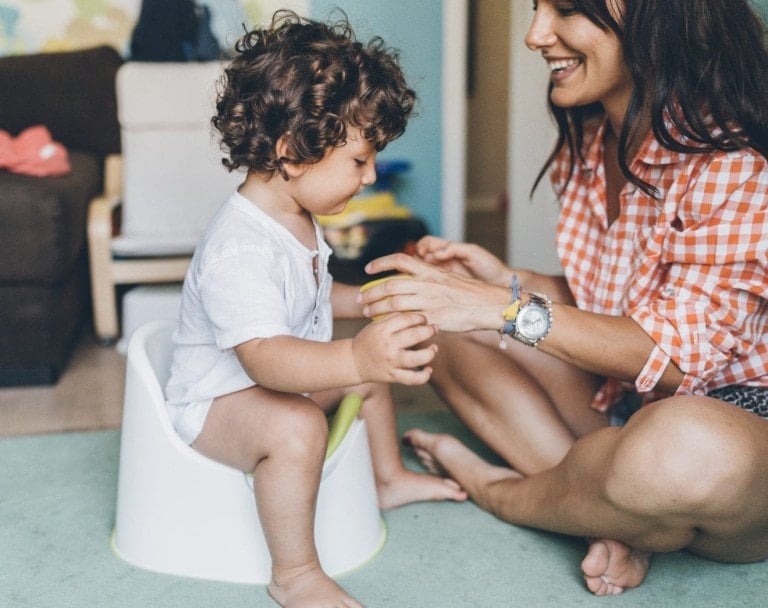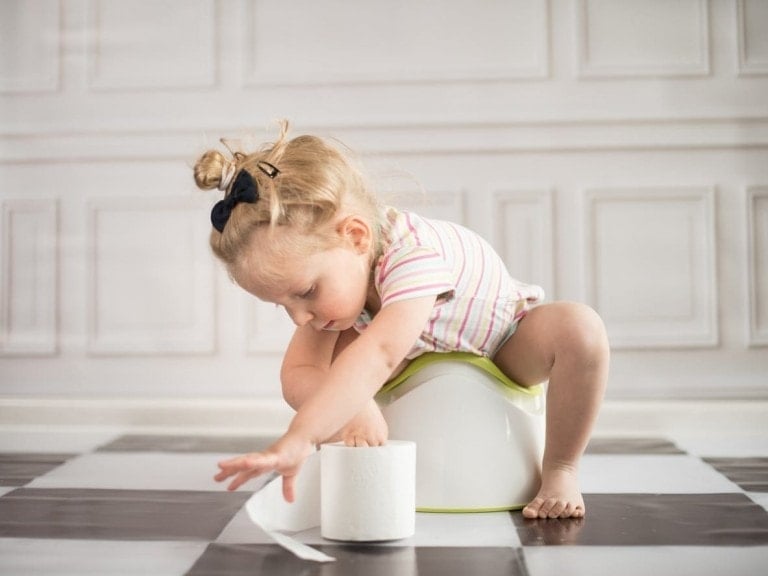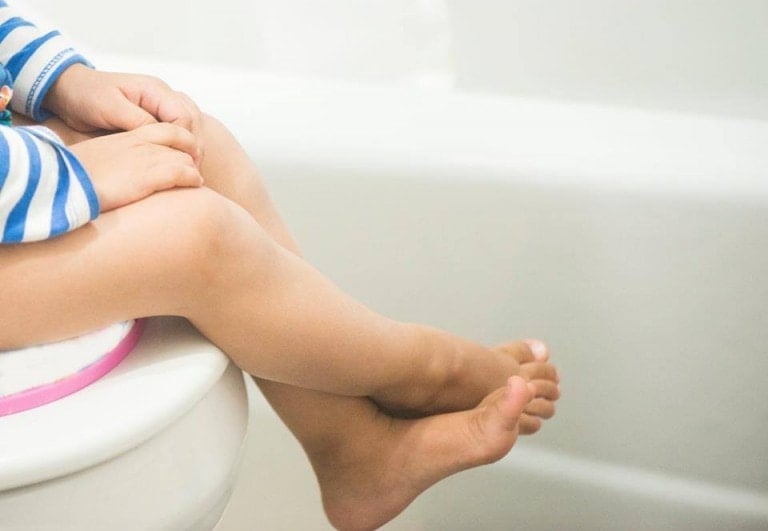Potty training can be one of the most challenging endeavors of your baby’s first few years. Rest assured, several methods and strategies are out there to set you and your baby up for success! We decided to borrow some lessons from the Montessori method and apply these lessons to potty training. While potty training the Montessori way may not be for everyone, many parents have used this method and loved it!
What is Montessori potty training?
According to the American Montessori Society, the Montessori philosophy is as follows: “Montessori is an educational philosophy and practice that fosters rigorous, self-motivated growth for children and adolescents in all areas of their development, with a goal of nurturing each child’s natural desire for knowledge, understanding, and respect.”1
What does this look like when applied to potty training? According to How to Raise an Amazing Child: The Montessori Way to Bring up Caring, Confident Children, by Tim Seldin, “Learning to use the toilet is a natural process that begins when your child’s desire to be grown up and his neurological development have reached the point where he can control his bladder and bowels. We don’t train children to use the toilet, we support them when they are ready.”
Potty Training the Montessori Way
Recognize Readiness
The first tip from the Montessori approach to potty training is to recognize that it is a natural and gradual process. It is important that the child demonstrate some readiness to use the potty. Before that landmark step occurs, you can begin to lay the foundation in a positive and supportive way.
- Talk about your child’s body and explain that using the potty is something that everyone does.
- Provide a potty in your house so your child feels comfortable around it.
- Allow your child to flush the toilet so they begin to explore how it works.
- Start putting clothes on your child so he can manage himself for potty training, such as elastic waist pants.
Bear in mind that children are usually beginning to have the ability to control their urine and bowel around one year of age. It is important to know this to be realistic about our expectations of young children.
Foster Independence
The Montessori philosophy also says to provide your child with as much independence as possible. Put a small step stool in the bathroom so your child can reach the sink. And when there is an accident, involve your child in the clean-up. Have her help wipe up the floor or put their soiled clothes in the hamper. Then have them put on new clothes as independently as possible.
Your role as a parent is to encourage your child, but try not to become emotionally involved in the process. Keep potty use as part of the routine. Do not offer it as a choice. Just say, “It is time to use the potty.” The Montessori approach to potty training says you should not force your child to use the potty, but you also shouldn’t say, “Do you want to use the potty?” It should simply be part of the routine. You can also set a “potty alarm” as a reminder if that helps.
Don’t Make a Big Fuss
As far as offering scolding or praise, this is where the Montessori approach differs from most conventional potty training approaches. The Montessori approach says never to scold the child for not using the potty or having an accident. On the flip side, don’t over-praise or reward the child when they do use the potty. The Montessori approach views using the potty as a normal thing that should be kept in its proper place. So there should be no celebrating, clapping, or rewarding. Keep it simple and normal, and do not call extra attention to it.
Don’t Interrupt
Another thing that might be different is that the Montessori approach suggests not interrupting the child to use the potty if they are doing something else, such as coloring or playing a game. Wait until they are done with their activity, then tell them it is time to use the potty. They also recommend that if your child has an accident while playing, wait until they are done playing to help them get cleaned up. They say to wipe up the floor around your child, but don’t disrupt what your child is doing.
Applying a potty training philosophy is very personal and must be consistent with your views and philosophies on parenting. Potty training the Montessori way is an excellent method, but it’s not the only one. There are a lot of potty training methods and philosophies out there. As in all parenting situations, it is good to do your homework, familiarize yourself with the different methods, and decide what will work best for your family.













